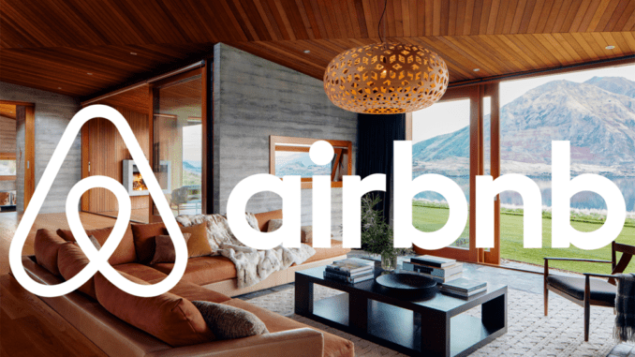Surviving in today’s competitive business environment requires many things:
- an excellent product or service that brings value to your customers,
- a sophisticated, data-driven marketing strategy (start with a rock solid marketing plan like the ones shown in this article)
But you’ll also need to secure a real competitive advantage. This sounds simple in theory. But securing a sustainable competitive advantage for your e-commerce business can be challenging to achieve in practice.
So we’re here to help you on your way. In this article we’ll be covering everything you need to know about competitive advantage:
- what competitive advantage is,
- what its benefits are,
- 3 competitive advantage examples,
- and finally, examples of competitive advantage in use with with real-world examples that you can copy or gain inspiration from.
Defining competitive advantage
The most common definition of competitive advantage is an attribute that allows a company to outperform its competitors. Or, to quote the famous Harvard Business School Professor Michael E. Porter (who we’ll meet again soon):
“Competitive strategy is about being different. It means deliberately choosing to perform activities differently or to perform different activities than rivals to deliver a unique mix of value”. Michael E. Porter, Harvard Business School
We can also add that for something to be considered a competitive advantage, it must be difficult – ideally, impossible – for others to replicate. If it’s relatively easy to copy, it’s only a temporary competitive edge and doesn’t count as a real, sustainable competitive advantage.
Okay, so a competitive advantage is whatever allows your business to do better than the competition, and it’s something that is difficult to duplicate.
But how is a competitive advantage established?
To make everything nice and systematic, let’s break down the process into three distinct parts:
- Benefit. Before all else, you should be able to define – both to yourself and your customers – the value of your product or service. This is often called a unique selling proposition, or just USP.
- Target market. Next, it’s crucial to gain a detailed understanding of who will be purchasing your product or service, and how to serve them.
- Competitors. Finally, you have to conduct research into its competitors (this guide to competitor analysis is a great place to start with this). This research should enable you to identify where your potential customers might be underserved or what you can do better than your competition.
In other words, if you want to establish a competitive advantage, you must define what benefit your product or service brings to your target market in ways that other competitors aren’t able to.
Competitive advantage examples
Remember Professor Michael E. Porter from before? Well let’s take a quick dive into his classic book “Competitive Advantage: Creating and Sustaining Superior Performance”. In this book he identifies three examples of “generic” competitive advantage strategies businesses can use to establish a sustainable competitive advantage.
Competitive advantage strategies: cost leadership
This is a strategy where a company offers products or services of comparable quality to its competitors, but at lower cost.
This can be achieved through continuous improvements of operational efficiency. You might be able to do this by reducing your workforce, focusing on high skill areas, or outsourcing certain functions of your business. You can also achieve this by taking advantage of economies of scale - in other words, being able to sell at lower prices because you sell a lot. However you achieved it, cost leadership is a sure fire way to stand out from the competition.
Competitive advantage strategies: differentiation
Differentiation refers to a quality of the product or service itself. In other words, we’re talking about the way in which the product is different from what competitors are currently offering.
This can be related to quality, features, mode of delivery, or any number of other attributes. Differentiation often results from developing and/or securing exclusive access to new or proprietary technology. This may result in disrupting the industry and establishing a sustainable advantage.
Competitive advantage strategies: focus
The focus strategy encompasses both cost leadership and differentiation. But importantly it only targets niche markets like vegan shoes, organic pet food, or cosmetics designed for various subgroups of the LGBTQ+ community.
Customers are often underserved in niche markets because they are small. And thi can mean they are less sensitive to price. This makes them highly attractive to new businesses, which are usually incapable of withstanding competition from bigger companies in larger segments of the market.
Focusing on smaller markets also means higher profit margins. There’s often lower competition, plus there’s the willingness of customers to pay a higher price for something they really want or need, but can’t get anywhere else.
As you can probably imagine, things have changed quite a bit since the 80s when Porter’s book was written, and while the above categories remain valid to this day, we would be remiss not to mention, at least briefly, a few (but certainly not all!) others that have become increasingly relevant in the digital age:
- Brand - A strong brand image and positioning strategy can give a massive boost to customer loyalty, and is therefore among the biggest competitive advantages a business can have. You can build your brand through visual design, blogs, social media presence … you name it.
- Network effect – This is when a product or service becomes more valuable the more people use it. A network effect is especially powerful if it is achieved early on - people then become reluctant to switch to better alternatives because it’s an inconvenience (think social media platforms and services like WhatsApp).
- Deep pockets – Having a large budget allows businesses to provide high-quality or very low-price goods and services. This makes it very difficult for less well-funded companies to respond in kind.
- Barriers – Businesses often make use of a wide variety of barriers to stop others from entering the market (or at least make it harder). These barriers can include high start-up costs, access to suppliers, regulatory hurdles, trademarks, and patents.
The importance of competitive advantage
As the world’s economies become more and more interconnected, so too does competition. Nowadays, companies are increasingly forced to compete not only with local, but also with international rivals.
This means businesses have to be creative in how they seek to gain an edge over their competitors.
So, let’s take a look at some real-world examples of how different companies have gone about establishing a competitive advantage.
Competitive advantage examples in use
Nvidia
Established in 1993, the multinational tech giant Nvidia has until recently been producing nothing but new iterations of its graphics processing units (GPUs), the most prominent line being Nvidia GeForce.
Rather than harming the company’s prospects, this specialisation was actually the driving factor of success. Restricting itself to a single product type has allowed Nvidia to allocate resources to accelerate innovation, develop top-notch customer service, and lower costs.
What started out as a niche product intended for general computing purposes is now the centre of gaming (which accounts for roughly half of Nvidia’s revenue), self-driving cars, augmented reality, and AI. Thanks to its single-minded approach, these relatively new industries are now “folding” around Nvidia, and not vice versa.
Over time, due to its early specialisation and success, the company has become something of a gatekeeper. Through events like the GPU Technology Conference, it engages with stakeholders and in this way maintains its leading position within the industry.
A good example of the potential benefits of choosing a specific offering, rather than segmenting by customer is Nvidia’s competition with its rival AMD. Despite producing comparable GPUs, the latter also makes other products (e.g., central processing units or CPUs), which diverts its attention from competition with Nvidia.
Competitive advantage: focusing on a specific offering can drive innovation and lead to improvements in customer service. It also helps you to establish cost leadership. Finally, there is the network effect - the value of Nvidia’s GPUs increases indirectly through wide-spread adoption, including by new and emerging industries.
How to use this competitive advantage for your e-commerce business: by focusing intensely on a segment of a market or industry, you can develop real expertise. Your customer support will improve as you learn more, and you can become viewed as experts in your specific field. Plus there can be cost advantages, such as buying more stock from one supplier, which can enable you do purchase your stock at more competitive prices.
Airbnb

In 2008, three roommates Brian Chesky, Joe Gebbia, and Nathan Blecharczyk launched a shabby-looking website. It offered short-term living quarters and breakfast for people left high and dry in the saturated market.
Fast-forward to 2021, and Airbnb – short for the original AirBed & Breakfast, named after the inflatable mattress which the friends set up in their living room for guests – is a prime example of an industry-disruptor.
Traditionally, the hospitality business was dominated by hotels and real-estate moguls, but Airbnb managed to change that, and quite decisively. Throughout its existence, the company has been arm-wrestling regulators to determine where they can and cannot operate, which boosted its drive for innovation even further.
Case in point – back in 2020, Airbnb started recruiting willing hosts to provide COVID-19 first responders with free or subsidised accommodation. The initiative was based on successful trial runs in France and Italy, and the company’s own Open Homes programme that was launched in 2012, allowing hosts to provide free lodging in emergency situations.
Another great example is the most recent app updates, including new features like “flexible destinations” (for travellers who don’t particularly care about any specific destination) and “personalised quick replies” (for hosts who want to give quick replies to common questions). Both functions were tailor-made specifically for 2021.
Competitive advantage: Airbnb’s business is a classic example of differentiation. Rather than creating cheaper or better quality hotels, they just ignored hotels completely. They compete by offering something no one else was offering. They also benefit from the network effect (the more people using the app, the more benefit its users derive from it).
How to use this competitive advantage for your e-commerce business: Airbnb’s success was based on identifying a gap in the hospitality industry and providing a solution to underserved customers. So try to ask yourself - is there a sizeable contingent in your own market which tends to fall through the cracks? If there is, can find a way to meet their needs? Be unorthodox and creative and you might just find a whole new segment - and you’ll have it all to yourself.
Even though starting a new social media platform isn’t necessarily impossible – after all, Facebook is not the only one out there – doing so requires a huge amount of funding and, let’s be honest, a good deal of intestinal fortitude (in other words, a strong stomach).
Pinterest, however, took a different tack. In 2009, instead of developing a fool-proof strategy to take on the social media juggernauts, its founders decided to go the niche route and grow the platform’s initial user base through referrals.
Today, Pinterest has over 450 million active monthly users and the stats about its business are pretty impressive:
- Its user base is mostly millennials and “zoomers”
- 89% of them use the platform to get inspired for new purchases
- Roughly 25% of time spent on the platform is shopping.
- a whopping 85% of users have bought something based on Pins they see from brands,
- and 98% have tried something they’ve seen on the platform.
What enabled Pinterest to succeed? It focused on a contingent of specific repeat customers rather than on a segment of the overall market (this is called needs-based positioning if you want the fancy term for it). Its photo-based list interface naturally inclined the platform’s user base to coalesce around topics like fashion, arts & crafts, and ideas for interior design.
Rather than going toe-to-toe with its competitors, Pinterest embraced its core user base and, despite remaining virtually invisible to those on the “outside”, succeeded quite spectacularly.
Competitive advantage: a platform where a niche segment of users benefit from lists that are curated by other users, rather than generated algorithmically. The network effect is also important here - the more users there are, the more valuable content they get to consume.
How to use this competitive advantage for your e-commerce business: casting a wide net is not always the best strategy – targeting a narrow demographic and developing a unique product or service that meets its specific needs can do wonders for companies seeking to stand out from the crowd.
Apple
Apple is the 21st century brand. The first company with a trillion dollar market cap, and a brand value estimated at over $200 million, Apple has always aimed “to bring the best user experience to its customers through its innovative hardware, software, and services”.
In addition to offering a catalogue of top-quality products, Apple has also been hyper-focused on other aspects of user experience as well. These include stellar customer service and support, which ensured the build up of enormous amounts of trust over time.
Two other pillars of Apple’s competitive advantage that are discussed less frequently are:
- the fact that Apple invests heavily into custom silicon, which gives it the luxury of planning its product developments in lockstep with hardware, software, and silicone engineering – an advantage their competitors simply do not have;
- the company’s strong commitment to privacy, harvesting user data only to improve its products and services, and not for its own economic gain.
Competitive advantage: focusing on the whole industry, while also catering to tech-savvy consumers willing to pay a premium price has driven Apple’s success. The company focused on innovation not only in product quality, but also customer service. It also differentiates itself in terms of quality (partly based on exclusive access to its own custom-made silicon) and privacy.
How to use this competitive advantage for your e-commerce business: think about ways in which you could offer quality and a premium feel that your competitors can’t. Improving user experience and customer service is a very good place to start. Offer a “white glove” experience that will make your customers feel special.
The takeaways
Put simply, a sustainable competitive advantage will help you sell more. As the competitive advantage example we have looked at show, it can:
- Make your customers more loyal,
- Help you grow fast without having to invest too much,
- Enable you to become more profitable.
And the good news is there are 3 concrete strategies you can use to achieve this: cost leadership, differentiation and focus. So take a look at how your e-commerce business is set up, and then pick the strategy (or combination of strategies) that will work best for you.
FAQ
What is a competitive advantage?
At its most basic, a competitive advantage is an attribute, or attributes, of a company that make(s) it stand out from its rivals. To be considered a competitive advantage, it also has to be difficult for other companies to replicate.
Why is competitive advantage important?
Given today’s highly competitive market environment and “picky” consumers, establishing a competitive advantage is one of the most important goals for pretty much any company, regardless of whether it’s achieved by way of competitive pricing, innovation, or by other means.
What types of competitive advantage are there?
The three “generic” strategies outlined by the influential theorist Michael E. Porter are cost leadership, differentiation, and focus. However, since the 1980s when his best-known book about competitive advantage was written, there appeared many other types, such as the network effect, brand image, or barriers to entry and competition.
How to establish a competitive advantage?
The most appropriate method of establishing a competitive advantage depends on the company, its target audience, and market environment, and requires a good deal of research and creativity. To put succinctly, what you need to do is define the exact benefit your product or service brings (or could bring) to your target audience in ways that your competitors aren’t (or won’t be) able to. Specifying the issue in this way will hopefully allow you to get the ball rolling.




